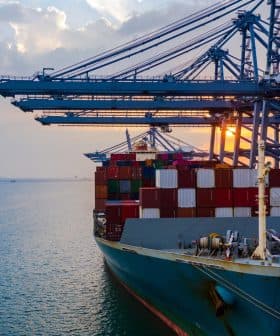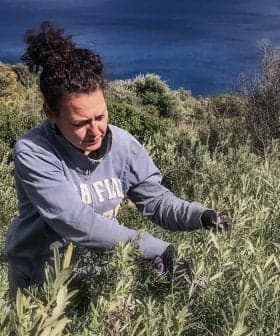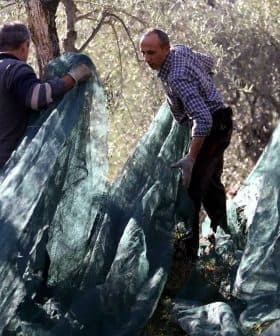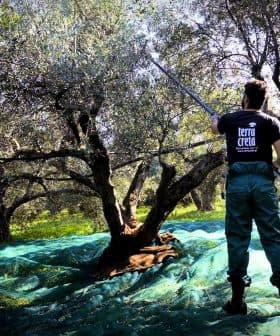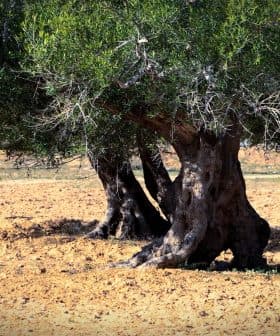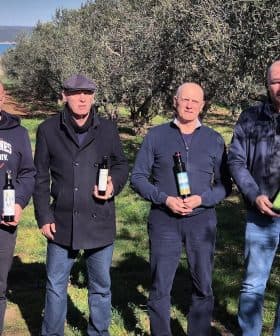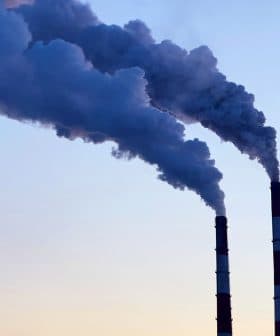Despite Drought, Croatia Enjoys Fruitful Harvest

Croatian olive growers are enjoying a bumper harvest this year, despite challenges of drought and high temperatures. The high oil accumulation in olives has led to record-breaking figures in terms of oil production, although experts warn that the quality of the oil may be affected by the dry conditions.
Croatian olive growers are rubbing their hands together in satisfaction. Except for the islands of Hvar and Vis, the harvest across the rest of the country was better than expected.
The bumper harvest comes despite the challenges of prolonged drought and scorching summer temperatures.
I don’t remember a harvest (as good as) this in the 50 years I’ve been working in olive growing.
“The drought started at the end of spring,” said Edi Druzetić, a well-known local agronomist. “Fortunately, fertilization was good, so the branches are full of fruits. They are smaller than usual, and they ripen more slowly, but the fruits are healthy since there were no diseases or pests due to the high temperatures.”
For more than 40 years, Druzetić has been professionally and passionately engaged in olive growing. As part of the Agroprodukt company, he takes care of 12,000 olive trees, mainly the domestic Buža, Istarska bjelica, Rosinjola and Rosulja varieties, on 45 hectares in western Istria.
See Also:2022 Harvest UpdatesThe harvest began a little later this year and is still going on, especially insouthern Istria, where the drought was more pronounced.
“We haven’t even harvested half of it yet, and in terms of quantity, we have more than we harvested last year,” Druzetić said.
This year, Druzetić expects to produce 30,000 liters, more than the previous year’s average. His Torćol, Salvela, Punta Cissana and Aurum blend brands have been awarded multiple times at domestic and international competitions, including the NYIOOC World Olive Oil Competition.
Uljara Vodnjan, both the oldest and most modern Croatian producer, according to insiders, operates as part of Agroprodukt.
The mill, which has existed in the same place for more than 100 years, was completely renovated and modernized last year and now includes new higher-capacity equipment. “We can process up to three tons per hour,” Druzetić said.
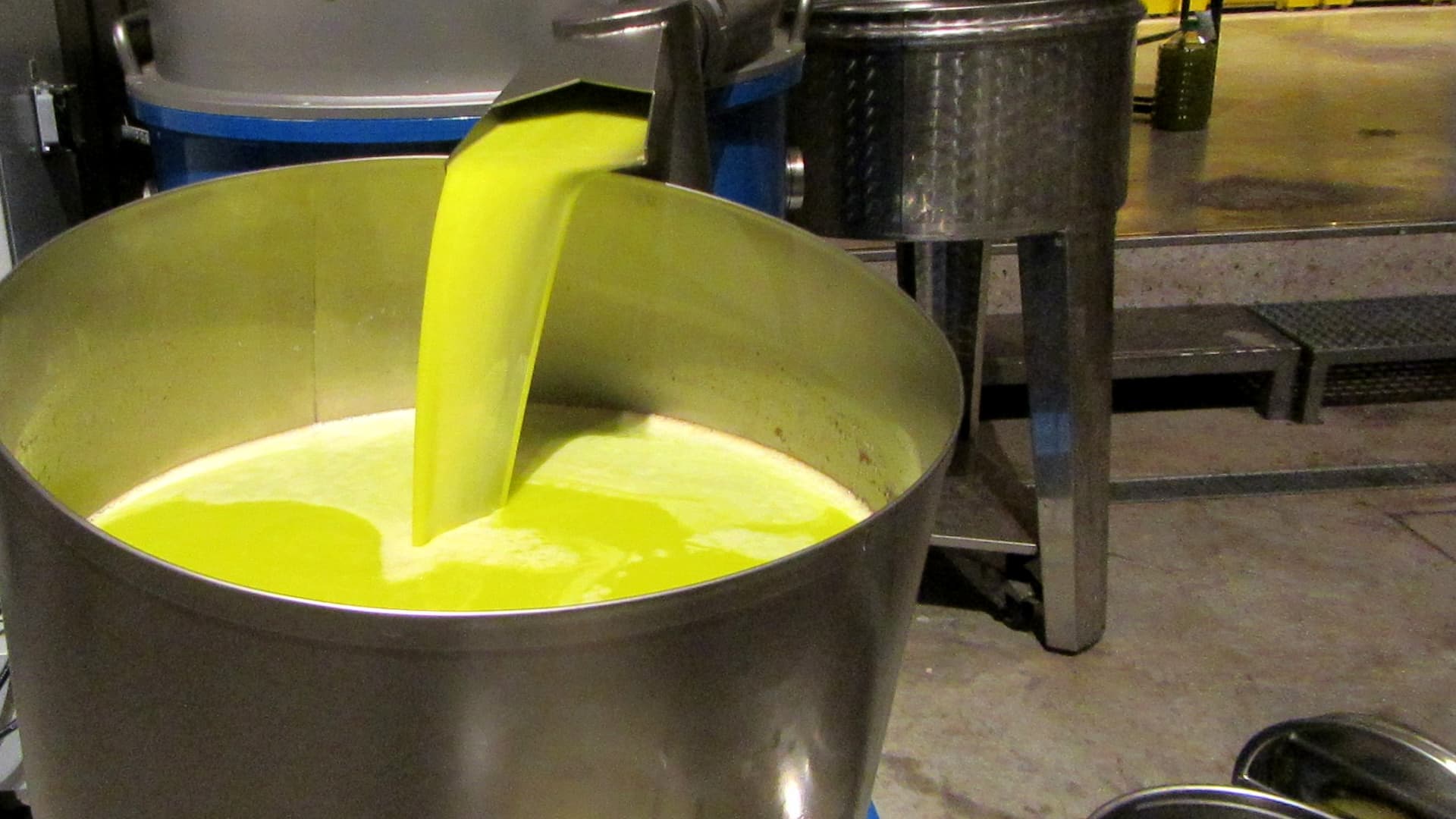
The mill opened on October 7, and its owners expect to process around 12,000 tons by the end of the season, twice as much as last year. Along with Istrian growers, some come from the Kvarner islands – located east of the Istrian peninsula in Kvarner Bay – to transform their olives.
In addition to Istria, oil mills are also working at full steam inDalmatia.
“I don’t remember a harvest like this in the 50 years I’ve been working in olive growing,” said Blaž Jurin, the longtime manager of the agricultural cooperative in Primošten Burnje.
He added that there were more fruits than usual since fertilization went well, but the long-term drought and high temperatures slowed the olives’ development and ripening.
The season was widely salvaged in Dalmatia by timely rain at the end of September and the beginning of October, which allowed the fruits to recover some oil accumulation.
However, harvesting was also delayed in Dalmatia for the same reasons as in Istria, with high temperatures in late October and early November delaying the ultimate ripening of the olives.
Part of what has made this year’s harvest stand out compared to previous years is the high percentage of oil accumulation in transformed fruits. Some growers estimate they have oil accumulation that is 20 or 30 times above average, with local media reporting record-breaking figures each day.
In northern Dalmatia, an olive grower from Čista Velika received 98 liters of oil from his 322 kilograms of olives processed at the Sveti Ivan mill in Vodice near Šibenik.
Records in other oil mills followed, with the largest coming in Supetar on the island of Brač. The English couple Tim Batson James and his wife, Paula, from Bristol, recorded oil accumulation of 34.6 percent from their olive grove on Brač.
Ivan Arnerić, the owner of the oil mill in Supetar, said he believes the high oil accumulation percentages are due to a large number of sunny days, high temperatures and dry spells in June and July.
He added that late August rain also helped but was followed by a long drought, affecting all of Dalmatia.
As a result, the fruits were left without the usual amount of water, making them smaller and lighter, so processing is cheaper for olive growers.
With fewer kilograms of olives, growers are receiving much more oil than in previous years. However, experts pointed out that high yields do not indicate that the oil is of better quality.
“The quality of such oils is not homogeneous. Polyphenols, bitterness and spiciness have increased, but aromas are missing,” Druzetić said.
Ivica Vlatković, an award-winning producer and president of the Association of Zadar County Olive Growers, also agrees with this analysis.
“High productivity in processing is a direct consequence of the dry olives this year,” he said.
Vlatković added that the oils would be of high quality in terms of bitterness and spiciness, but they would still lack fruitiness. This is especially true for oils from non-irrigated olive groves.
When the olives are too dry, millers add water, which dissolves some phenolic compounds, which end up in the olive pomace. As a result, an unpleasant bitterness prevails in these oils without the pleasant aromas.
Vlatković and Druzetić also agree that excessive fertility in the dry season can result in lower fruiting in the following year. The drought has resulted in the lower growth of new branches, which could decrease olive yields next year.
“If there is no moisture in the air and soil, the olive tree can hardly achieve a good yield and prepare for high fertility the next year,” Vlatković said.
He pointed out that most olive varieties are sensitive to uneven yields from year to year, which is caused by an excessive harvest in one year that depletes the olive tree’s resources and prevents the growth of a sufficient number of new shoots in the following year. The result is a reduced number of flowers and fruits and a reduced yield.
However, research has demonstrated that uneven annual yield can be reduced by irrigation. Irrigating in the early part of the year promotes the growth of shoots and more flowers in the following year.
Furthermore, a sufficient amount of water is needed in the late spring and early summer to determine the number of fruits, which results in a higher yield.
“Later doses of irrigation are used to regulate the size of the fruit, the amount of dry matter and the ripening period,” Vlatković said.
Without irrigation, there is no successful olive growing. In Croatia, despite significant water resources, rivers and lakes, only 2.5 percent of the country’s olive groves are irrigated.


